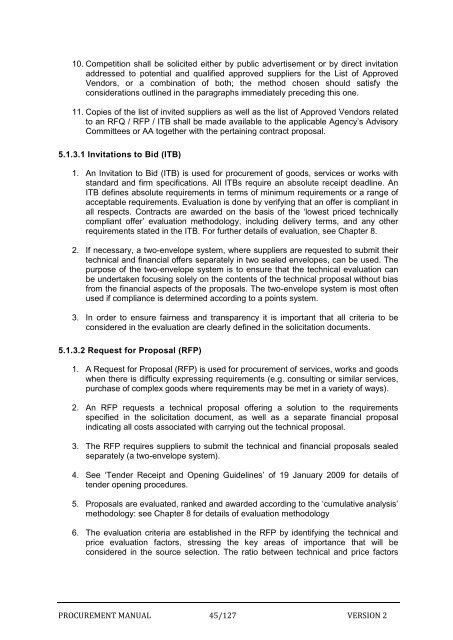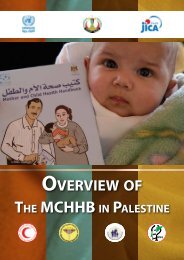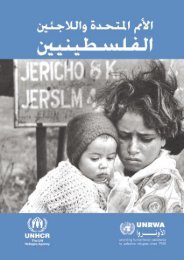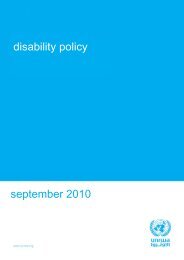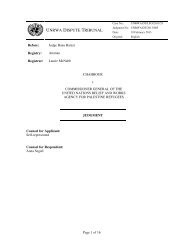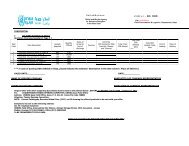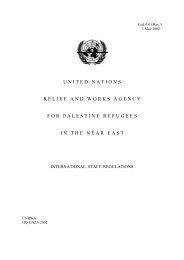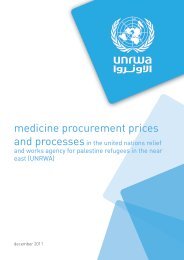Procurement Manual - Unrwa
Procurement Manual - Unrwa
Procurement Manual - Unrwa
You also want an ePaper? Increase the reach of your titles
YUMPU automatically turns print PDFs into web optimized ePapers that Google loves.
10. Competition shall be solicited either by public advertisement or by direct invitationaddressed to potential and qualified approved suppliers for the List of ApprovedVendors, or a combination of both; the method chosen should satisfy theconsiderations outlined in the paragraphs immediately preceding this one.11. Copies of the list of invited suppliers as well as the list of Approved Vendors relatedto an RFQ / RFP / ITB shall be made available to the applicable Agency‟s AdvisoryCommittees or AA together with the pertaining contract proposal.5.1.3.1 Invitations to Bid (ITB)1. An Invitation to Bid (ITB) is used for procurement of goods, services or works withstandard and firm specifications. All ITBs require an absolute receipt deadline. AnITB defines absolute requirements in terms of minimum requirements or a range ofacceptable requirements. Evaluation is done by verifying that an offer is compliant inall respects. Contracts are awarded on the basis of the „lowest priced technicallycompliant offer‟ evaluation methodology, including delivery terms, and any otherrequirements stated in the ITB. For further details of evaluation, see Chapter 8.2. If necessary, a two-envelope system, where suppliers are requested to submit theirtechnical and financial offers separately in two sealed envelopes, can be used. Thepurpose of the two-envelope system is to ensure that the technical evaluation canbe undertaken focusing solely on the contents of the technical proposal without biasfrom the financial aspects of the proposals. The two-envelope system is most oftenused if compliance is determined according to a points system.3. In order to ensure fairness and transparency it is important that all criteria to beconsidered in the evaluation are clearly defined in the solicitation documents.5.1.3.2 Request for Proposal (RFP)1. A Request for Proposal (RFP) is used for procurement of services, works and goodswhen there is difficulty expressing requirements (e.g. consulting or similar services,purchase of complex goods where requirements may be met in a variety of ways).2. An RFP requests a technical proposal offering a solution to the requirementsspecified in the solicitation document, as well as a separate financial proposalindicating all costs associated with carrying out the technical proposal.3. The RFP requires suppliers to submit the technical and financial proposals sealedseparately (a two-envelope system).4. See „Tender Receipt and Opening Guidelines‟ of 19 January 2009 for details oftender opening procedures.5. Proposals are evaluated, ranked and awarded according to the „cumulative analysis‟methodology: see Chapter 8 for details of evaluation methodology6. The evaluation criteria are established in the RFP by identifying the technical andprice evaluation factors, stressing the key areas of importance that will beconsidered in the source selection. The ratio between technical and price factorsPROCUREMENT MANUAL 45/127 VERSION 2


